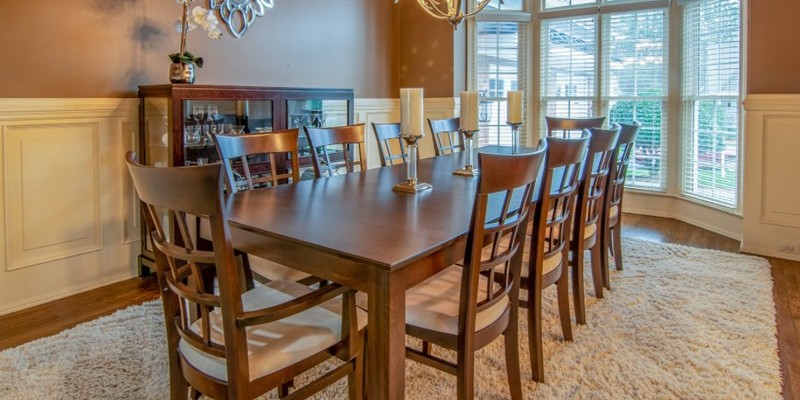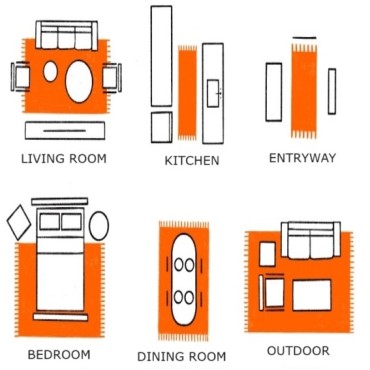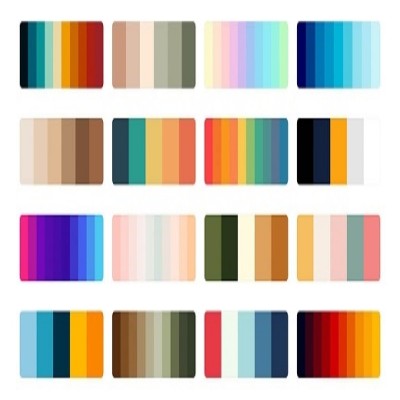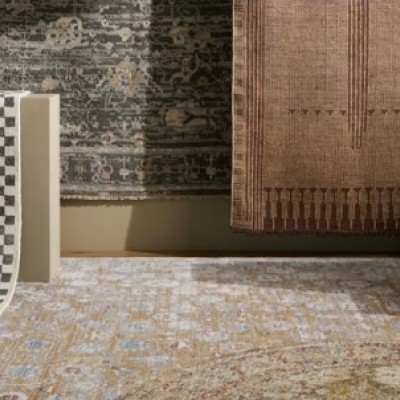
Rugs in the dining area have sparked heated disputes. And besides, it's a dining establishment, which means there will be crumbs and spills. A dining room rug has a purpose beyond simply preserving a floor or adding a nice texture beneath your feet. Almost all of the time, it's for aesthetic reasons, or you're searching for a rug to match your furniture and provide visual appeal to the space. A rug, on the other hand, serves to mask sounds and offer warmth, both literally and metaphorically. It keeps your feet warm on chilly, bare floors while also concealing less-than-appealing flooring. Take a look at the information below to learn more about how to pick the best rug for your dining room.

Rug Design

Select a rug shape that will suit your dining room furnishings. The majority of dining room carpets are rectangles, although any form will do. The rug should reflect the contour of the table since it is most visually appealing. A long, thin table, for example, looks well on a thin rectangle, while a round or oval rug highlights the form with a round or elliptical table. There seems to be an infinite amount of ways to decorate your house, and because it's yours, you know what feels right. Go for it if it means experimenting with an unusual rug and dining table combination.
The component
Take into account the fact that your dining room rug will be sat on by heavy furniture. Furniture will be dragged out and shoved in. Even if there are no large spills, food-related mishaps might occur, and crumbs will be left behind. Your rug's lifetime is dependent on the material you pick. Your budget, understandably, may have a role in the material you choose. Consider the effects of wear and tear. Since a dining rug is expected to see a lot of heavy movement, a rug composition that is easy to clean and can withstand heavy use earns marks on the positive statement of financial position.
Pattern and color

The selection of a color or pattern is critical. In your dining area, those two pieces provide visual intrigue and appeal. Determine the rug's purpose. Your rug's color might serve as a starting point for your room's color design or a means to connect colors. Consider how you want to utilize the color of your dining room rug: as an accent, to provide drama, to add warmth, or to lighten the atmosphere. Find a suitable pattern. Even in light colors, patterned carpets are ideal for hiding stains and spots caused by food or drink. If you don't like bright, eye-catching designs, a subtle pattern will do just as well at hiding flaws.
Bonus tip:
Select a pattern that complements the period of the furniture. Traditional furniture looks best with a Persian or Oriental rug, whereas mid-century contemporary furniture looks best with a plain-colored rug with a fascinating structure or a patterned or geometrical design.
Rugstown.com can readily give you a large range of rugs that will easily meet all of your requirements. Working with them will be easy and dependable since they provide exceptional customer service.





